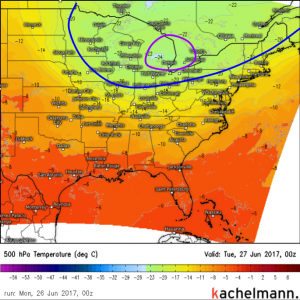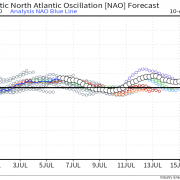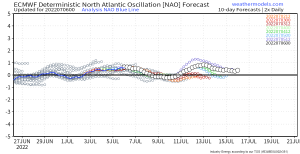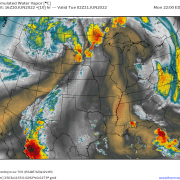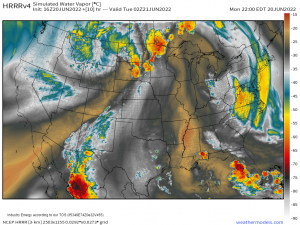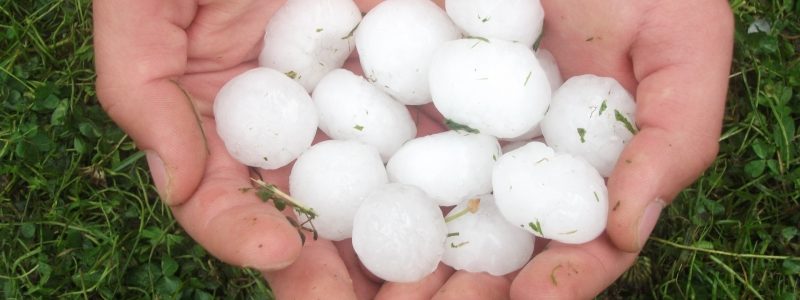
How Does Hail Form?
Hail is a fairly common weather phenomenon across much of the US, especially in the spring and summer. While most hail is fairly small and does little damage, some hailstones can pack quite the punch! So how does hail form and grow large enough to cause billions of dollars in damage to roofs, cars, and crops each year?
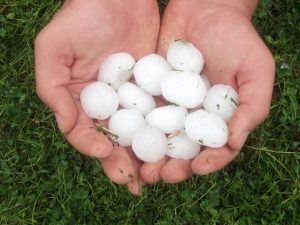
Hailstones fall during strong thunderstorms and can range in size from that of a pea to that of a softball.
The answer lies in the column of violently rising air in the center of a thunderstorm known as the updraft. As warm, moisture laden air rises rapidly through the atmosphere, it cools and condenses into raindrops. As these raindrops are swept even higher, they eventually pass the freezing level and some of them freeze into small ice crystals. Others, however, become supercooled meaning that they retain their liquid state while also dropping below freezing. As the frozen ice crystals zoom through the cloud of supercooled liquid, the supercooled droplets freeze onto the crystals. The hailstones are suspended in the updraft, collecting ice from the supercooled droplets until they become too heavy to be supported by the updraft, at which point they fall to the ground. Some hailstones can grow to be several inches in diameter!
So what atmospheric conditions are supportive of hail? First of all, you need a strong updraft to keep hailstones suspended in the air. Without a strong enough updraft, the ice crystals will just fall back to the ground, melting into rain along the way. It also helps if the freezing level is low in the atmosphere. If the freezing level is low, hail can grow throughout much of the storm and the updraft doesn’t have to lift moisture as far up into the atmosphere for hail to begin forming. For enough instability to be present at the same time as low freezing levels, you often need a cold pool aloft. A cold pool aloft is an area (pool) of cold air that exists in the mid-upper levels of the atmosphere. This cold air aloft can occupy the same area as warm air at the surface, generated by heating from the sun. Cold pools are especially helpful for hail development in the Northeast and upper Midwest.
While cold pools aloft are helpful in terms of hail development, are they necessary? The short answer is no. So what else can produce large hail? If the storm’s updraft is strong enough and if the storm’s top is high enough in the atmosphere, hail will form no matter how warm the low/mid levels are. This is due to the fact that a powerful enough updraft can carry moisture so high into the atmosphere that eventually it can freeze. Incredibly powerful updrafts are responsible for the massive hailstones that fall in the Great Plains during supercellular storms.
It’s important to note that not all ice falling from the sky is hail. Only chunks of ice that fall from the sky during thunderstorms is hail. During winter storms, small pellets of ice fall from the sky if conditions are set up correctly. This is known as sleet. As a general rule, if it’s cold and ice is falling from the sky, it’s sleet. If it’s warm and ice is falling from the sky, it’s hail. I’ll have much more info on winter weather phenomena as we get closer to the cold season.
Now that you know a little more about how hail forms, be sure to keep an eye out to see if any is headed in your direction!
